A
The aim of this tool is to demonstrate, to those with normal vision, the potential of vision loss and the degree of change a person with macular disease may experience. It does not provide an accurate representation of how vision may appear with any other retinal conditions, nor is it reflective of any disease improvement that may or may not occur through medical treatment as it does not take into account any distortions, field defects or vision in the other eye. This tool is for illustrative purposes only and does not serve as a replacement for seeking medical advice. If you are concerned about your eyesight and/or are experiencing any symptoms, please visit your healthcare professional.
Snellen chart
A Snellen chart is used to measure the clarity of eyesight. Starting with one large letter, each row contains an increasing number of letters in decreasing size. Results of the test are shown as fraction, such as 6/6. The first number is the distance the chart is viewed from (6 m), the second is the distance at which an observer with normal vision can see a letter clearly (6 m). This chart is used by the DVLA as part of the driving standards that apply to all UK road-users.
LogMAR chart
The LogMAR chart is another method of assessing visual acuity. The chart contains rows of 5 letters in decreasing size, and the result is given as a decimal, such as 0.3. This number is scored from taking a base-10 logarithm of the minute(s) of visual angle e.g 2 minutes of visual angle scores LogMAR 0.3. The LogMAR chart therefore offers a more precise measure of visual acuity, compared to Snellen.
ETDRS
Early Treatment Diabetic Retinopathy Study is a method of visual acuity testing designed to eliminate inaccuracies in Snellen tests and the result is represented as a letter score. It is the best known example of a LogMAR chart and is used in clinical practice to make decisions around treatments. In this app, it was scored at distance of 1 m.
Reporting of side effects and quality complaints

Instructions for patients
If you get any side effects, talk to your doctor, pharmacist or nurse. This includes any possible side effects not listed in the patient information leaflet. You can also report side effects directly via the Yellow Card Scheme at https://yellowcard.mhra.gov.uk/.
You can also report side effects and quality complaints to Bayer Plc. Further information is available on the “contact” tab at www.bayer.co.uk. By reporting side effects you can help provide more information on the safety of this medicine.
Reporting adverse events and quality complaints

Instructions for healthcare professionals
Adverse events should be reported. Reporting forms and information can be found at https://yellowcard.mhra.gov.uk/ or search MHRA Yellow Card in Google Play or Apple App Store. Adverse events should also be reported to Bayer plc.
If you want to report an adverse event or quality complaint, reports can be directed to Tel: 0118 206 3500 or Email: pvuk@bayer.com Further information is available on the "contact" tab at www.bayer.co.uk.





